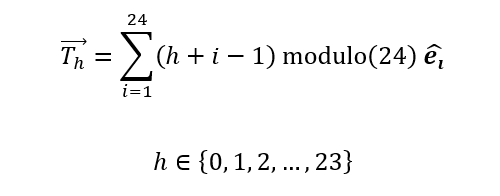The first 26 (22 males and 4 females) subjects who accepted to wear a Fitbit Alta HR during the clinical trial were analysed. Patients were imaged and measured using RECIST 1.1 criteria every 3 months. For each hour, we used minute-to-minute calories, metabolic equivalent of task (MET), activity intensity, number of steps, and heart rate to compute the mean, minimum, 10th to 90th percentile, maximum, as well as the 1st, 2nd, and 3rd time-derivative of these variables. Time in hour was encoded as vectors (T_h):

where h is the time in hour and (e_i ) are the standard unit vectors in 24th dimension. This formulation was derived to ensure that for all n∈{1,2,3,…,11}, the distance ‖(T_(h+n))-(T_h)‖ in Euclidean 24-space increases as n increases but remains the same for all h∈{0,1,2,…,23}. We subsequently performed dimension reduction analyses of biometric data using uniform manifold approximation and projection (UMAP) and principal component analysis (PCA).